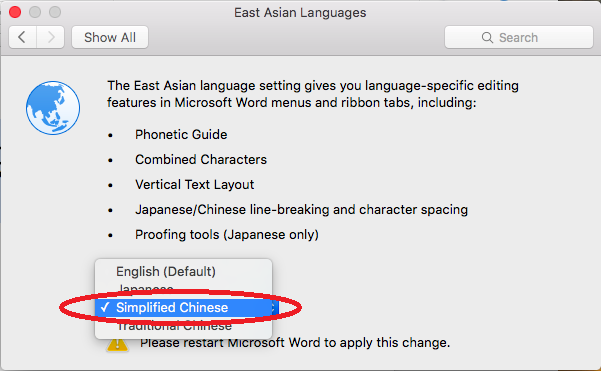How To Change Default Font In Word 2016 For Mac
Posted By admin On 23.12.18Big mac sauce for sale 2016 in america. Word is a powerful application, but some of the configuration tools are not very intuitive. It’s easy enough to change the font for text in your current document, but that doesn’t change the default font that’s applied every time you create a new document. Changing the default font in Word is not obvious. We’ll show you an easy way to do this. Open an existing document or enter some text in a new document.
Select some text and click the “Font” dialog box button in the “Font” section of the “Home” tab. On the “Font” dialog box, select the font you want to set as the default in the “Font” list box and click the “Set As Default” button. A dialog box displays asking if you want to set the default font for the current document only or for all documents based on the Normal template.  Select the “All documents based on the Normal.dotm template” radio button. NOTE: The new default font is saved only to the template currently in use.
Select the “All documents based on the Normal.dotm template” radio button. NOTE: The new default font is saved only to the template currently in use.
Existing documents will not be changed the next time they are opened. If you have a custom template applied to the current document, the default font will be saved in that template and not in the Normal template. The easiest way to change the default font in the Normal template is to create a new document and then follow the steps in this article.
Word for Office 365 for Mac Word 2019 for Mac Word 2016 for Mac Word for Mac 2011 To use your favorite font in Word all the time, set it as the default. If you’ve already changed the default font and the new setting isn’t sticking, scroll down to read about checking permissions.
Change Default Font settings in Microsoft Word 2016 Ali Rafi'ee 3 Comments December 13, 2016 In this article, you are going to learn how to change default font settings in Microsoft Word 2016. Here’s how you change the default font in Word 2016: 1. Under the “Home” tab, click the little pop-out arrow in the Fonts section: 2. That will open a new window with lots of choices – font, size, style, etc. Just choose what you want and check it in the preview at the bottom, then click “Set as Default”. You’ll get a little. Excel 2016 - Font Style - How To Change Font Color in the Cell - Theme Palette Accent Colors of Text - Duration: 4:15. Professor Adam Morgan 9,813 views. To Change Default Font Settings Follow the Following steps. Introduction: First you need to know which font settings are as a Default setting in Microsoft applications. Here as you see the picture in Microsoft word we have tow groups of setti. I would like to change the default font size of my footnotes to 10 point, while keeping the rest of my text in 12 point. I've seen advice on this thread that apply to earlier versions of Word for Mac, but still can't figure out how to do it in Word 2016.
• On the Format menu, click Font, and then click the Font tab. You can also press and hold + D to open the Font dialog box.
Finder alternative for mac 2017 holiday. Some of the features such as Batch Rename, Calculate Checksum are limited to pro and not available in the lite version. But the lite version nevertheless will get the job done for most normal Mac OS X and MacBook Air & Pro users. So, These are the Top 3 Free Finder alternatives for Mac OS X or Alternative File explorers for Mac OS X, which are compatible even with the latest Mac OS X updates (Mountain Lion, Yosemite, Mavericks & El Capitan too).
• Under Font, click the font you want to use, and then under Size, click the size you want to use for the body text. • Click Default in the bottom left corner, and then click Yes to apply the change to all new documents based on the template.
How To Change Default Font In Word
Adobe premiere free download for mac os x. Click OK when finished. If the default font setting doesn’t persist Sometimes, a company’s permission settings change the default font back to the original font. If that’s happening, try this: Check permissions • Open Finder, and in the Search box, type Normal.dotm.

• On the File menu, click Get Info. Or, press and hold + I. • Click General, and make sure Locked is unchecked. If it’s checked, uncheck it. • Click Sharing & Permissions, and next to your name, make sure you have Read & Write permission under Privilege. If you aren’t able to uncheck the Locked box or if you don’t have Read & Write permission, contact the person who’s in charge of your company’s computer systems.